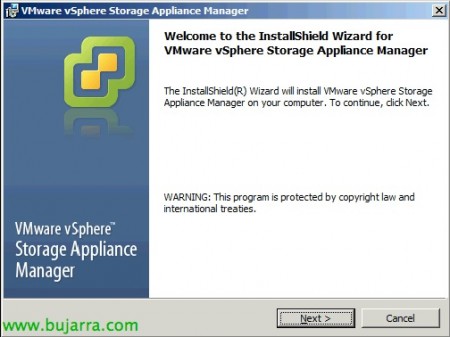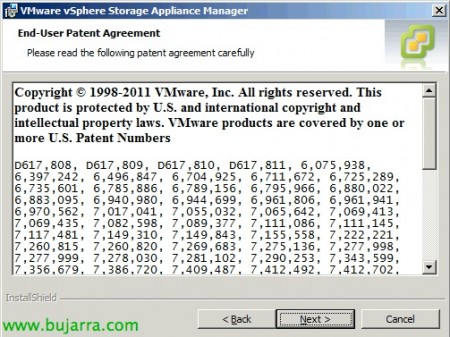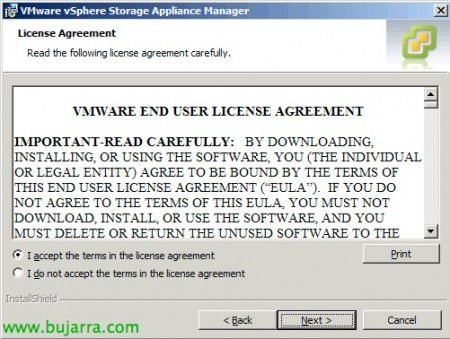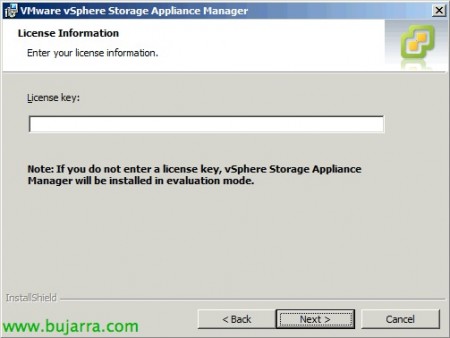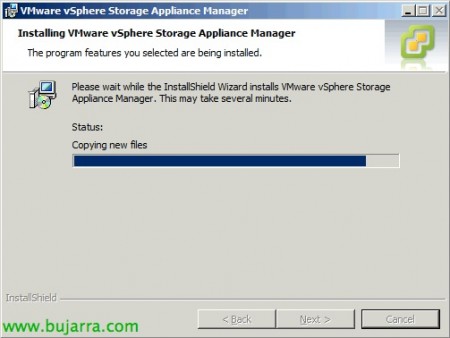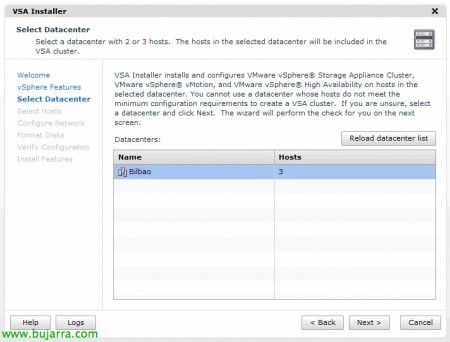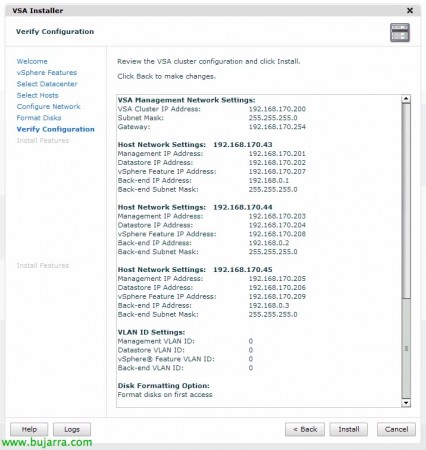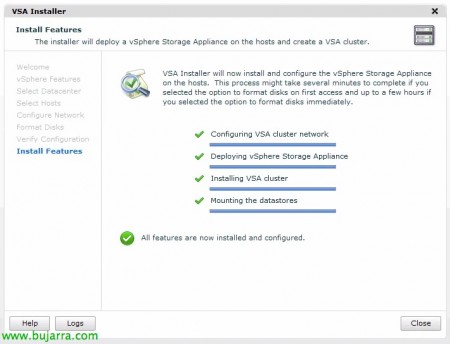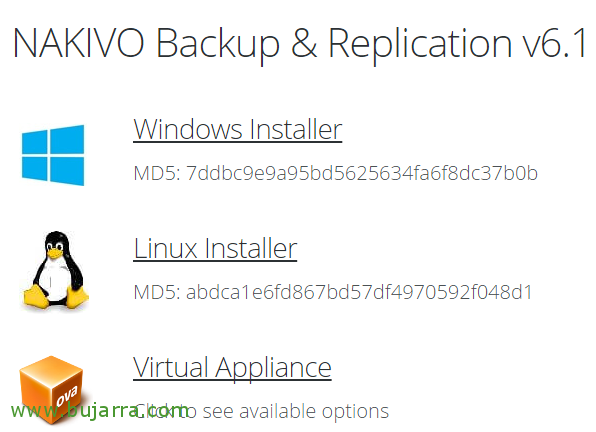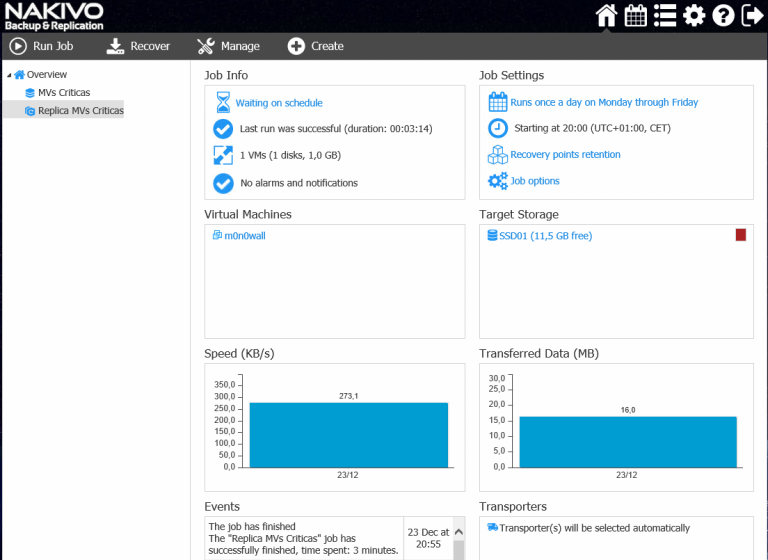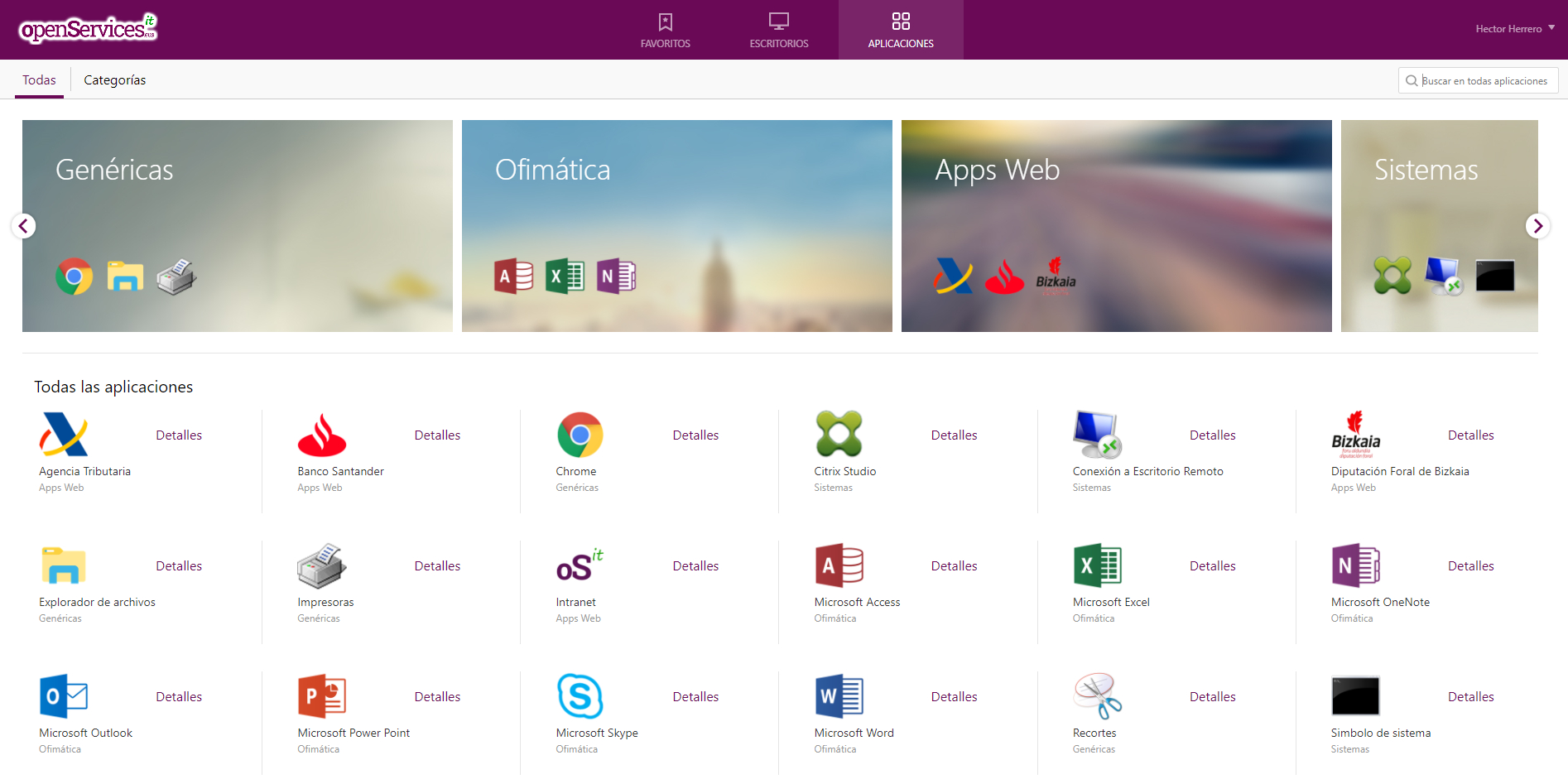
vSphere Storage Appliance – VSA
vSphere 5 vSphere Storage Appliance (VSA), a solution designed for small businesses that do not have the budget to purchase a storage array and want to have high availability in terms of storage or have features such as HA or VMotion, DRS… Thanks to this small appliance that runs on each host and through the VSA Manager, we will have the local datastores replicated between the ESXi hosts.
To get started we will need a vCenter and 2 or 3 newly installed and configured hosts, with as many local hard drives as we are interested in, in the vCenter we will install VSA Manager & later we will configure, it will create a VSA Cluster with a virtual appliance on each host, each vApp will present a datastore replicated by NFS to each host obtaining a highly available shared storage. The way the VSA Manager works is to split the local datastore of each host into two volumes, one as the origin of the replica and the other as the destination, the first would be the one presented by NFS. The VSA is a virtual appliance based on SUSE Linux Enterprise Server 11 SP1 with software for disk clustering. The host's will have at least 4 Network adapters, since 2 will use them in teaming for the host management network & network of VMs & Front-end and the others 2 for VSA Back-end Network and another for VMotion. With the Essentials Plus or Standard licenses we will get HA or vMotion, With the FT Acceleration Kit & DRS and Enterprise Plus Storage vMotion!
This is an example to calculate the capacity that we will be able to obtain with VSA, if we have three hosts with 8Tb of capacity each: Capacity of each VSA datastore = 8Tb / 4 = 2Tb. 2Tb * 3 hosts = 6Tb total. In the event that the hosts have different capacities, the calculation will be made with the one with the smallest size.
We will need to install VMware vSphere Storage Appliance Manager on the vCenter Server, “Next” to begin installation,
“Next”,
We accept the license agreement, “Next”,
We indicate the data of the vCenter server, “Next”,
We'll enter the vSphere Storage Appliance Manager license key, if we do not have a, We may evaluate or license it later,
“Install” to begin the VSA Manager installation,
… Wait a few minutes…
“Finish”,
Well, we will easily configure VSA Manager, from the vCenter client after the plugin is loaded, in the Datacenter we will click on the “VSA Manager”, and in “New Installation”,
It informs us through a wizard that a cluster will be created and both HA and vMotion will be enabled, “Next”,
We check the hosts we have available & “Next”,
We select the hosts we are interested in adding to the cluster & “Next”,
We will select an IP address per host for VSA management, an IP address for the datastore, an IP address for the VSA's VMotion network, a VLAN ID if applicable, the IP for the VSA Backend network that you will use for replication of the volumes & for the VSA cluster. We will have to provide all this information for each VSA that will generate, we can configure it with DHCP. “Next”,
We select when we will format the disks that will have the VSAs, it is advisable to do it immediately, “Next”,
We confirm the installation summary and click “Install”
We confirm with “Yes” that the content of the local datastores will be deleted,
We will wait a few minutes while the VSAs with the requested configuration will automatically be deployed, a cluster will have been created for us to which the hosts will belong, the management networks for the VSAs will have been created for us, How to stop cluster traffic or for datastore replica traffic.
From our datacenter in the “VSA Manager” We will be able to edit the cluster, Add hosts, put it in maintenance mode or reconfigure networks. We will have a view of the “Datastores” where we will see its state, capacity, available, Used, Published Why VSA, and your IP.
In the view of “Appliances” We will be able to appreciate his name, state, capacity, Management IP, Back-end IP, Exporting Datastore, Replica hosting and host hosting.
And finally, in “Map” We will see a map that will clarify all the connections between: Datastores to Replicas, datastores to VSA, replicas to VSA and VSA to host.



